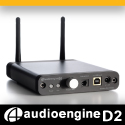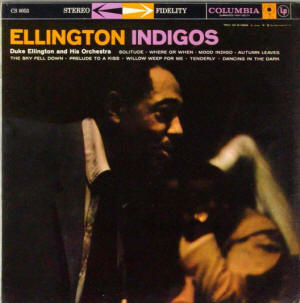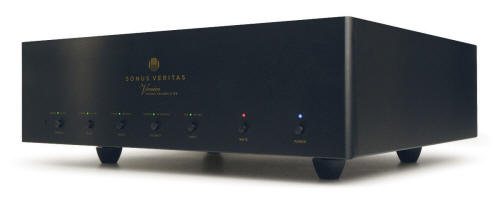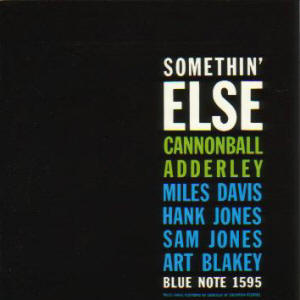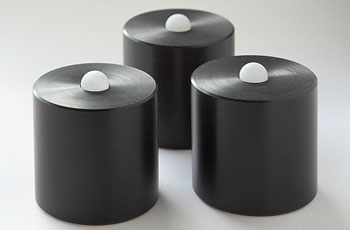|
|
You are reading the older HTML site
Positive Feedback ISSUE 65
allnic audio H-3000V Phono Stage as reviewed by Marshall Nack
The photos I saw of the Allnic H-3000V Phono Stage gave me the impression it was a mini. Perhaps it was the jewel-like build quality and the finely wrought metalwork that lent it a certain precious aspect. In person, that was off by a mile. Not only does it occupy a full-size shelf, but the external power supply is a decent-sized box on its own and needs to go elsewhere. It's also tall (6.82"), just fitting under the 7.25" clearance of my TAOC shelf. Given all those tubes inside, I thought this might be problematic. But the H-3000V's designer, Mr. Kang Su Park, doesn't believe in stressing his valves and runs them at reduced bias. Consequently they stay cool, with the added benefit of enjoying long life. (The power supply, on the other hand, does get hot.) Also, ventilation is not an issue as the top, sides and rear is open.
Some Background Allnic Audio Labs, founded in 2005 by Mr. Park, is based in South Korea. Previously, Mr. Park co-founded Silvaweld, a company renowned in its time for transformer-coupled and single-ended-triode tube designs.
Let's get right to the sound. First up: Rossini-Respighi's La Boutique Fantasque (LSC-2084), an old, favorite RCA Shaded Dog from 1959 with Fiedler and the Boston Pops. Through my reference ASR Basis Exclusive (the 2008 version, not the latest), most of the sound is hard left/right, placed at the speakers and behind them. Width is quite good; depth less so. Dynamic scaling and orchestral weight are very good as well. No pinpoint imaging here and there is some evidence of breakup on tutti passages, especially when the bells come in on side two. (I know this to be a source issue.) Nonetheless, the antique LP is silky smooth, non-fatiguing and sounds great through the ASR. The Basis Exclusive is a well-known commodity. Now, swapping to the H-3000V, it's not like there's not a huge shift in the overall presentation. In fact, every time I did this A/B, I was struck by how much stayed the same in terms of tonal balance, stage dimensions, orchestral weight and dynamics, even the very low noise floor. The sound is still left/right. Many visitors commented on the lack of a tube signature, especially regarding the very low noise floor and the evenness of frequency response. This was unexpected, given that the H-3000V is a full tube design. Yet it doesn't take more than two seconds for you to know something fundamental has shifted. It might as well be a different orchestra playing or a different LP. That's the capsule review right there: The H-3000V does the audiophile dog and pony show about as well as my ASR, which is to say at reference level. On top of that, it introduces hard-to-put-your finger on but important elements that transform the listening experience, moving it to a space with enhanced credibility. The ASR never let me escape awareness I was listening to a facsimile. Constructing the Illusion It's all in the construction of the illusion. Let's look at some of the pieces. For one thing, image shapes have assumed appropriate form. The image of a tuba is broad and diffuse, while that of a piccolo is focused and pinpoint. They vary in nature. With the ASR, this was problematic, as everything had more or less similar shape. Secondly, even while stage depth has nicely defined receding layers, individual images with the ASR have only two dimensions—they are flat, like a paper cutout. The H-3000V makes them round and three dimensional. There are similar differences in duration over time. Notes last about as long through either phono stage, but with the ASR the span is homogeneous and coarse in comparison. With the H-3000V, as the note moves from the transient into the sustain it changes shape and tone quality. There's life in that span, the H-3000V puts these things in motion. I still hear the breakup when the bells come in, although it is a bit softer and less bothersome than through the ASR. This is an important litmus test of the H-3000V's footprint: is it large or small? (More on this coming up shortly.
Next I put on a six-eye original of Ellington's Indigos (Columbia CS 8053). Again, the stage is very wide. The "sound pixel" density of the H-3000V's resolution is about as heavy as the ASR, but it's the quality of the little things, the way it connects the dots, that's different. Trumpets sound like trumpets; the piano like a piano. Instruments sound like they're supposed to. Actually, instruments have the characteristics I've come to associate with designs employing step-up transformers. Indeed, the product under review today, the H-3000V, is fully transformer coupled . Step-Up Transformers Some people believe the only way you can get correct timbral and dynamic relationships is with a step-up transformer in the signal path. I've heard what they're talking about and believe it is true. (I've written about this many times, most recently in my Sonus Veritas Venice review.)
But wait—there's more. In researching the H-3000V, I became aware of a subset of people, an often overlapping crowd with strong opinions regarding how RIAA equalization is implemented. Specifically, they are proponents of LCR networks instead of the common capacitance/resistance (CR) network. They claim something special develops in midrange transparency and openness when these devices are used. It so happens that the Allnic's most prominent characteristic is its extremely natural sound. I think that's what the LCR partisans are referring to. The H-3000V is so easy and effortless on the ear, almost to the point of being self-effacing. Beyond incorporating the timbral and dynamic relationships of the step-up discussion above, the sound-stage itself has a different feel. It feels inhabited. It is definitely not a "black background." (I take issue when exceedingly low noise levels are described as a "black background," and this is considered to be a compliment. Unamplified acoustic instruments activate the air in the performance space—sound does not happen in a vacuum. The only time I hear "black backgrounds" is with amplified instruments.) Implementing these RIAA networks is notoriously difficult. The only other product I know of that uses it is the Ypsilon VPS 100. Maybe that is why the H-3000V sounds closer to the Ypsilon than the Sonus Veritas.
Discussion with the importer expanded on this theme. This naturalistic quality does not happen by accident. It is a conscious sensibility and the design/engineering choices are driven by it. Such as: Zero negative feedback is employed, with only two gain stages.< Exploration and use of obscure tubes. Mr. Park scans the world for just the right valve for a given purpose. All of the transformers use Peramalloy cores and transformer windings have upwards of 80% nickel content. Almost everything is fabricated in-house, even the transformers. The Allnic factory is full-service.
Let's spin another Ellington LP, Side By Side, one of the first heavyweight reissues from the defunct Classic Records (Verve MG VS-6109). Everyone knows audiophile reissues don't sound like the originals: some things get better; some worse. Just how they differ is the subject of heated debate. I expected to hear the telltale clues of a reissue. Would the Allnic voicing cover it over and made it all beautiful or would it reveal the good and the bad? I dropped the needle; the Allnic stepped up to the plate, and... The audiophile stuff was wonderfully presented, with dynamics and resolution well surpassing the original, not to mention the total removal of surface noise and quite often the elimination of distortion/breakup from over-saturated grooves (provided it was clean on the master tape). And, yes, liquidity and timbral subtleties both took a hit as expected. Moving up to newer 45 RPM reissues, those audiophile commodities took another leap up. At times it was so good as to generate "you could be there" credibility. Big, weighty, round images—listening became intensely visual with this source material, as your mind's eye watched the interplay of the images on the soundstage. My attention did not waver and I was in audiophile heaven.
Ah, but not quite. My panel-mate George nearly had a seizure when "Cannonball" Adderley began his solo on the first cut of Somethin' Else (Analogue Productions 45 RPM reissue of Blue Note 1595). "That does not sound like a saxophone. The fat tone is there, but where is the texture and the air, the evidence of Cannonball's breath in the mouthpiece?" He's right—there wasn't any texture, it was all smoothed over. O happy day! This meant the H-3000V passed the footprint test with flying colors! The H-3000V often surprised me by revealing LP issues I didn't know about. As is often the case, this was initially annoying: soon, it morphed into admiration of the H-3000V's honesty. Setup The Allnic has adjustable gain, loading and selectable RIAA curves. To adjust RIAA, four switches must be changed—there are ten different combinations of roll-off and turnover settings. Nice. But the location of these controls is problematic: all are located on top of the chassis, facing up. To change them I would need to pull the unit out of the shelf. As a result, I did most of my listening at the setting marked for normal RIAA. (This is not a bad place to be fixed at: According to the manual, "the RIAA standard should be used for most records."
The last time I had a phono stage with adjustable RIAA in for review, the selector switch was on the front panel (the MONK); the time before that they were accessible via the remote control (the AMR-PH77). I was informed Allnic tried remote operation for RIAA adjustment and rejected it. They felt it caused too much sonic degradation. The H-3000V sounded best with audiophile reissues. Not sure what that implies, but I thought it worth mentioning. On second thought, it's probably related to my not compensating RIAA for Golden Age recordings. Tweaks There's a lot of metal and wire in the unit—consequently, burn-in needs to be reckoned with. Log at least 100 hours before attempting any assessment. The importer informs you'll be hearing changes up through 300-400 hours. Not about to wear out my $5K cartridge, I made good use of the Granite Audio MC Phono Burn-In CD (new one with a MC burn-in track). It's well worth the $50 given what you save in cartridge wear.
Power conditioning is not recommended and may even be deleterious. Plug the H-3000V straight into the wall. Splendid results were achieved with both Kubala-Sosna Elation! and the new Dynamic Design THB Nebula power cords. Signal wires were Elation! XLR interconnects and Emotion phono cable. Tube Rolling The main chassis comes with eight carefully selected NOS tubes—leave these alone, you can't improve on them. One thing quickly became clear in my discussions with the importer: these guys know their way around tubes better than anybody. Besides, these are uncommon—you won't find much tube rolling info on these valves. The E810F tubes should last 10,000 hours; the 7233 and 6485 at least 3,000 hours. (Replacement tube kits are available from the importer. They are not cheap: a complete set costs $500.) The rectifier tube in the external power supply chassis is another story and is fair game. Rolling this valve can have a bigger impact than swapping power cords or interconnects. The supplied tube is a current production 5AR4, usually from Sovtek, JJ or Shuguang. The importer recommends an NOS RCA 5U4G for its speed and dynamics; alternately, he suggests an NOS Mullard 5AR4. I tried both. The RCA 5U4G If your thing is transparency, the ability to step into and walk around the players on a soundstage, the RCA 5U4G is the way to go. This valve imparted hyper resolution, edge definition and soundstage transparency, making the H-3000V soundstage rock stable and as dimensional as a hologram. (There are a couple of varieties of this NOS RCA. Call Hammertone Audio for advice.)
This RCA valve also did a splendid a job resolving tics and pops, which became all the more audible. I mean, they were there with the ASR, but now I could discern what kind of noise it was, whether it was dirt, a deep or superficial scratch, etc. But the RCA was also a little thin and light weight. Some people found it edgy, and hence fatiguing. The Mullard 5AR4 I had an NOS Mullard on hand, sitting in the power supply of my ModWright/SONY XA-5400 SACD player. (Available for $135 at BRENT JESSEE RECORDING & SUPPLY, INC.) Mullards have a reputation for sounding beautiful, but colored, and so it was with this UK made, short bottle, 7-notch, copper-lined plates 5AR4 when I swapped it in. It brought a darker, meatier sound with more substance, fullness and liquidity. The edgy or brittle quality disappeared. On the other hand, it was not as fast or crisp and transparency was reduced. Tics and pops became less noticeable. (Note: This is largely system dependent. The rest of my system is solid-state; you might find otherwise in a valve-based system.)
edenSound TerraStone Rollers Well, since I borrowed the Mullard 5AR4 from my ModWright/SONY XA-5400 SACD player, why not try the edenSound TerraStone Rollers that worked so well under the SONY's power supply? Gosh darn, and golly! They worked marvelously under the H-3000V main chassis, the power supply or both. (Contact: edenSound and ask about TerraStone Rollers.) Ultimately, the best sound was achieved with the Mullard and the TerraStone Rollers under the main chassis only. Now I had enhanced body, weight and image focus; the only thing missing was the supernatural transparency of the RCA valve. Loading and Gain The importer recommends you begin with the Impedance control set to 47K ohms and the transformer gain control set to give a comfortable listening level. To match volume with the ASR Basis Exclusive for A/B testing, I set the Impedance to 47K and gain to 28dB. (According to the chart in the manual this gives you 70 ohms loading, about right for my Shelter Harmony.) Alternately, the importer recommends setting the Impedance control at 30 K ohms and the transformer gain control to 32dB. The latter setting yielded crisper and brighter results. Conclusion The Allnic H-3000V Phono Stage is impressive looking. Build quality is luxury class. Better yet, its sound is even more impressive. The H-3000V does all the things audiophiles yearn for, about on the level of my ASR Basis Exclusive. It also incorporates most of the desirable aspects of tube sound (sweet tone; rich timbre; a continuous, flowing musical line) without having an obvious tube signature. However, it goes beyond both of those to places rarely encountered in audio. How does it sound? Supremely natural, so easy and effortless as to be almost self-effacing. It is the product of obsessive attention to detail and a fearless pursuit of "off the beaten path" engineering solutions, regardless of difficulty or expense. The H-3000V is one of the top three tube phono stages in my experience, joining the Sonus Veritas Venice and the Ypsilon VPS 100, and it is the most affordable of the lot. It isn't going back to the importer: it's staying put in the reference system here at Nack Labs. Marshall Nack
Allnic H-3000V Phono Stage
Allnic
Audio Labs , South Korea Importer
Hammertone Audio |


